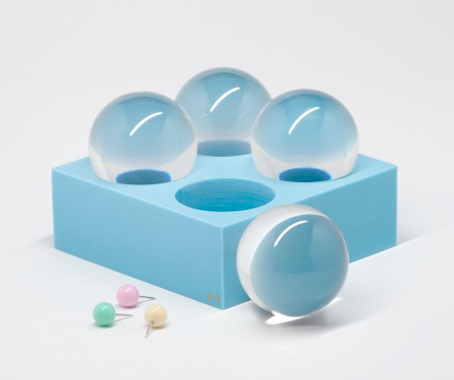Paris-based studio Silvio d’Ascia Architecture has completes a new data processing centre for the Bank of Shanghai, its second such complex in the city.

July 30th, 2014
Architects Statement:
The new project, conceived in partnership with AREP and Shanghai-based ECADI, is located in the Zhangjiang Innovation Park, situated about 21 km from Pudong. Imagined as a sort of « digital fortress », the complex includes roughly 12,500 m² of data server rooms, with these spaces forming the foundation upon which rest other programmatic zones, such as offices, customer service centres, restaurants, and conference centres.
Explains d’Ascia: “There is this new reality of a data centre. We talk a lot about ‘what is the cloud? What is a data centre?’ Our society is presented with this new idea of a data centre and we are still exploring what such a centre could really mean as a building type. For that reason, we are interested in working on more projects that deal with this new emerging typology. For the moment a lot of these kind of buildings are done without the architects’ help and we would like to change this current way of thinking. The idea was to give a certain solidity to the image of the bank; we wanted the centre to reflect the strength of the financial institution housed within its walls.”
The project’s conclusion comes on the heels of the studio’s recent data processing centre for the Shanghai Futures Exchange. Both projects came about as the result of winning competition bids and continue the studio’s foray into highly-technical buildings for the digital age. “I truly believe this sort of building, the data centre, is the future. Every company will need one,” notes d’Ascia.
The project centres on the theme of a ‘high-tech fortress’, giving the Bank of Shanghai an image of strength and stability. Such a strength is reinforced through the use of a uniform foundation for the complex, which also happen to house the data centre facilities. The remainder of the building program elements are located on, around, or beside this foundation.
To amplify the notion of a uniform foundation, the complex makes use of local Shanghai granite as a facade treatment. This vernacular stone, with its calm grey tint, is impressively set off against the glass and aluminium brise-soleil system that envelops the central office tower.
Photography: Yves Chan You
yveschanyou.com
Silvio d’Ascia
dascia.com
A searchable and comprehensive guide for specifying leading products and their suppliers
Keep up to date with the latest and greatest from our industry BFF's!

The Sub-Zero Wolf showrooms in Sydney and Melbourne provide a creative experience unlike any other. Now showcasing all-new product ranges, the showrooms present a unique perspective on the future of kitchens, homes and lifestyles.

Suitable for applications ranging from schools and retail outlets to computer rooms and X-ray suites, Palettone comes in two varieties and a choice of more than fifty colours.

In the pursuit of an uplifting synergy between the inner world and the surrounding environment, internationally acclaimed Interior Architect and Designer Lorena Gaxiola transform the vibration of the auspicious number ‘8’ into mesmerising artistry alongside the Feltex design team, brought to you by GH Commercial.

Marylou Cafaro’s first trendjournal sparked a powerful, decades-long movement in joinery designs and finishes which eventually saw Australian design develop its independence and characteristic style. Now, polytec offers all-new insights into the future of Australian design.

How branding studios are cutting through the visual clutter with distinctive, integrated and complementary design.

A strong historical legacy is reflected in Temple & Webster’s name and demonstrated in their local industry reinforcing practices
The internet never sleeps! Here's the stuff you might have missed

In the pursuit of an uplifting synergy between the inner world and the surrounding environment, internationally acclaimed Interior Architect and Designer Lorena Gaxiola transform the vibration of the auspicious number ‘8’ into mesmerising artistry alongside the Feltex design team, brought to you by GH Commercial.

The Australian Design Centre (ADC) this year celebrates 60 years! A series of events are coming up to mark the occasion.